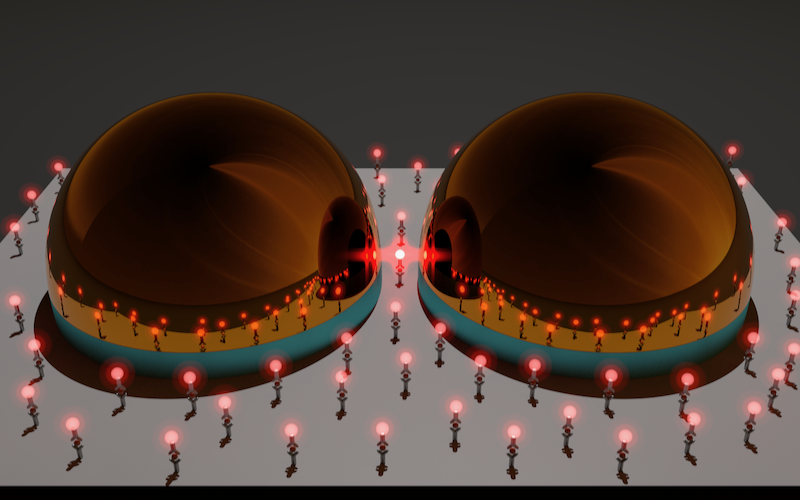A quantum leap for biosensors

Easing COVID-19 lockdown restrictions and returning to a semblance of normal life will require numerous safety precautions to be put in place. Antigen testing, in particular, has been touted as a key measure for easing lockdowns, with businesses and governments even mulling over the use of ‘immunity certificates.’
Quantifying the levels of antigens in a sample is currently carried out using a method called an immunoassay, where a target molecule is captured by an antibody specific for it. One variant of this method, plasmonic immunoassay, detects altered plasmon oscillation and changes in reflected light when a target molecule is captured onto a metal surface.
At infinitesimal quantities of a target molecule approaching the detection limit, however, frequency shifts become subtler and harder to detect. Now, scientists led by Lin Wu from A*STAR’s Institute of High Performance Computing (IHPC) and Ortwin Hess from Imperial College London have found a way to enhance the sensitivity of classical plasmonic immunoassays by applying principles based on quantum mechanics.
In their simulation of a quantum plasmonic immunoassay, a metal surface displays a pair of gold nanohemispheres. Each pair—or nanodimer—is separated by a one-nanometer space where target molecule binding occurs. This space functions as a nanoscopic lens that focuses light on a nano-hotspot.
“At such a hotspot, light-matter interaction is enhanced so drastically that the system enters the strong-coupling regime, where the coupling exceeds dissipative rates,” explained Wu.
Detection in their assay relies on a phenomenon called Rabi splitting, which is much more sensitive than classical sensing and no longer dependent on the concentration of the captured target molecule, Wu said. Through computational experiments, the researchers found a massive sensitivity boost of nearly 15 times compared to conventional plasmonic sensors.
“To the best of our knowledge, our paper describes the first proposal of a quantum plasmonic biosensor that is sensitive enough to detect single molecules,” Wu said.
This method of strong coupling could also be used in applications, such as monitoring air quality and food safety, as it would be possible to detect single molecules and conduct quantum sensing at room temperature. Wu acknowledged that their assay design remains difficult to achieve in reality at this point, but she hoped that their work would inspire advances in plasmonic immunoassay sensors.
“Moving forward, our research team at IHPC will continue collaborating with our colleagues at A*STAR and at the local universities to find innovative solutions for plasmonic applications, such as next-generation electronics and ultra-high sensitivity biosensors,” she said.
Kongsuwan, N., Xiong, X., Bai, P., You, J., Png, C.E., et al. Quantum Plasmonic Immunoassay Sensing. Nano Letters 19: 5853-5861 (2019) | article
A*STAR celebrates International Women's Day

From groundbreaking discoveries to cutting-edge research, our researchers are empowering the next generation of female science, technology, engineering and mathematics (STEM) leaders.
Get inspired by our #WomeninSTEM
.png?sfvrsn=ff199933_15)